What Makes OpenAI’s Agentic AI Stand Out in 2025?
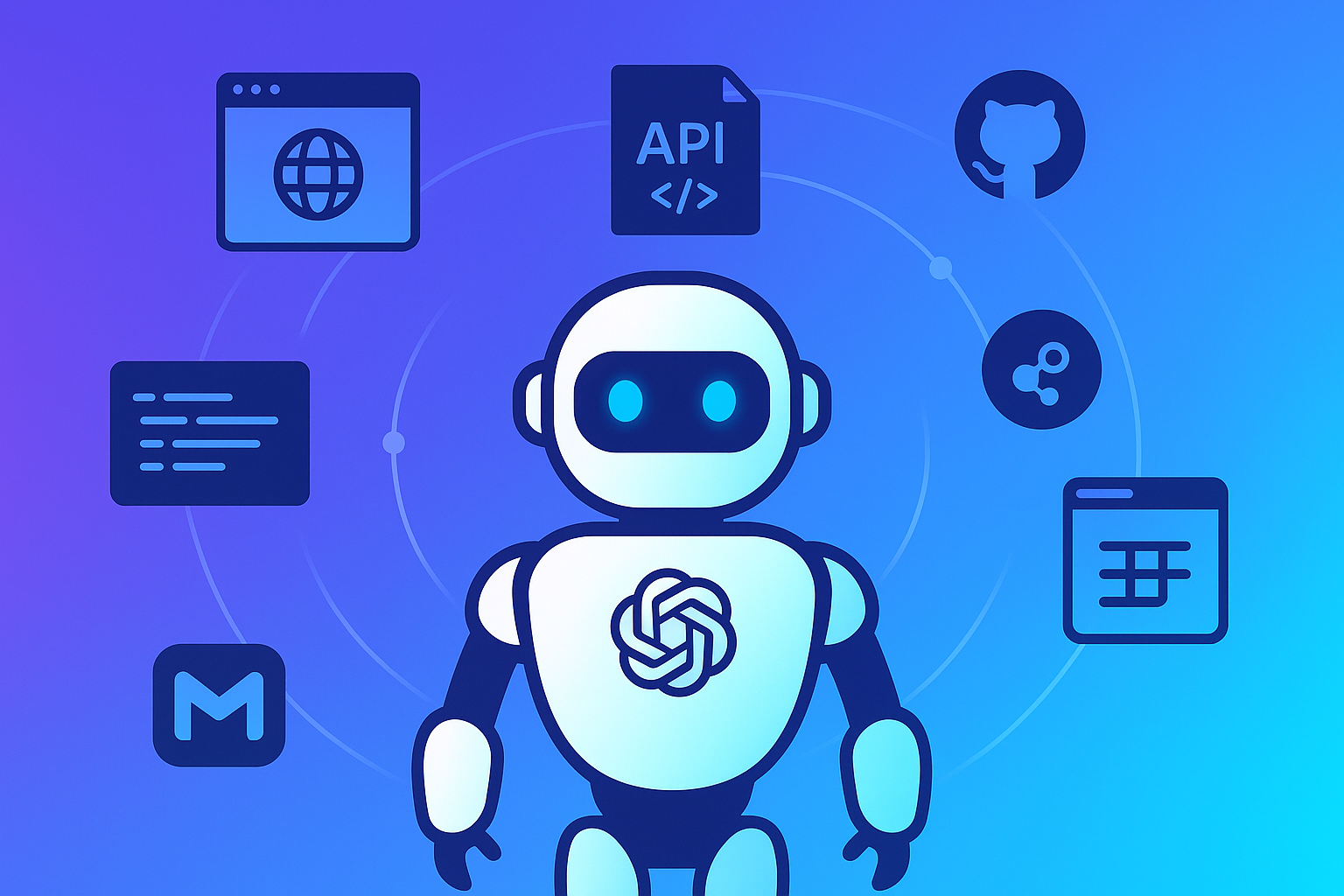
Sorry, there were no results found for “”
Sorry, there were no results found for “”
Sorry, there were no results found for “”
Yes, OpenAI offers a fully functional agentic AI product.
The company launched ChatGPT agent mode on July 17, 2025, enabling the platform to autonomously complete multi-step tasks using integrated tools like web browsing and code execution.
Three months later, OpenAI released AgentKit, a comprehensive suite of developer tools designed to build, deploy, and optimize AI agents end to end.
These releases position OpenAI as a frontrunner in the agentic AI market. The company is targeting business and product leaders who want intelligent automation without rebuilding their entire tech stack.
After testing the platform myself over the past few months, I found the setup surprisingly straightforward, though the agent sometimes struggled with nuanced tasks that required domain-specific judgment.
OpenAI’s agentic AI operates through a unified system that combines ChatGPT’s reasoning capabilities with the ability to browse websites, run code, and call APIs on a virtual computer.
When you assign a task, the agent evaluates the goal, selects the appropriate tools, and executes a sequence of actions until it completes the objective or hits a roadblock.
The agent can leverage connectors to Gmail, GitHub, Slack, and other applications, securely accessing user data only after prompting for permission. This permission layer ensures that no sensitive action occurs without explicit approval.
| Component | Business Function |
|---|---|
| Web Browsing | Market research, competitor analysis, real-time data retrieval |
| Code Execution | Data transformation, script automation, report generation |
| API Calls | CRM updates, order processing, third-party service integration |
| Connector Access | Email drafting, calendar scheduling, document retrieval |
In my own tests, I noticed the agent paused before sending emails or modifying files, which built trust in its decision-making process.
This architecture allows the agent to handle tasks that previously required multiple tools and manual handoffs. For instance, it can pull sales data from a CRM, analyze trends in a spreadsheet, and draft a summary email without switching contexts.
That difference matters because task completion speed increases when one system orchestrates the entire workflow. Now, what does this look like when a real user puts it to work?
Picture a product manager who needs to compile competitive intelligence for an upcoming sprint planning session.
Instead of manually visiting competitor sites, copying feature lists, and drafting notes, she activates ChatGPT agent mode with a single prompt: “Research the top three CRM platforms, compare their AI features, and summarize findings in a table.”
The agent follows a clear journey from problem to outcome:
Within 10 minutes, the product manager has a ready-to-share document. This speed and autonomy stand in sharp contrast to traditional research assistants that require step-by-step instructions or manual verification at every stage.
Competing solutions often lack the tight integration between reasoning, browsing, and data manipulation that OpenAI bundles into one interface. That brings us to the broader question of what sets OpenAI apart in a crowded field.
OpenAI carved out a unique position within the top companies building agents by making a consumer-facing agent mode and a full developer toolkit within the same year.
While other vendors focus on narrow automation or require extensive custom coding, OpenAI offers a plug-and-play experience for non-technical users alongside deep customization options for engineering teams.
The company has also prioritized safety and governance. OpenAI released Guardrails, an open-source modular safety layer that can automatically mask personal data, detect jailbreak attempts, and enforce policy compliance.
This ensures deployed agents operate within trusted boundaries, a critical consideration for enterprises handling sensitive information.
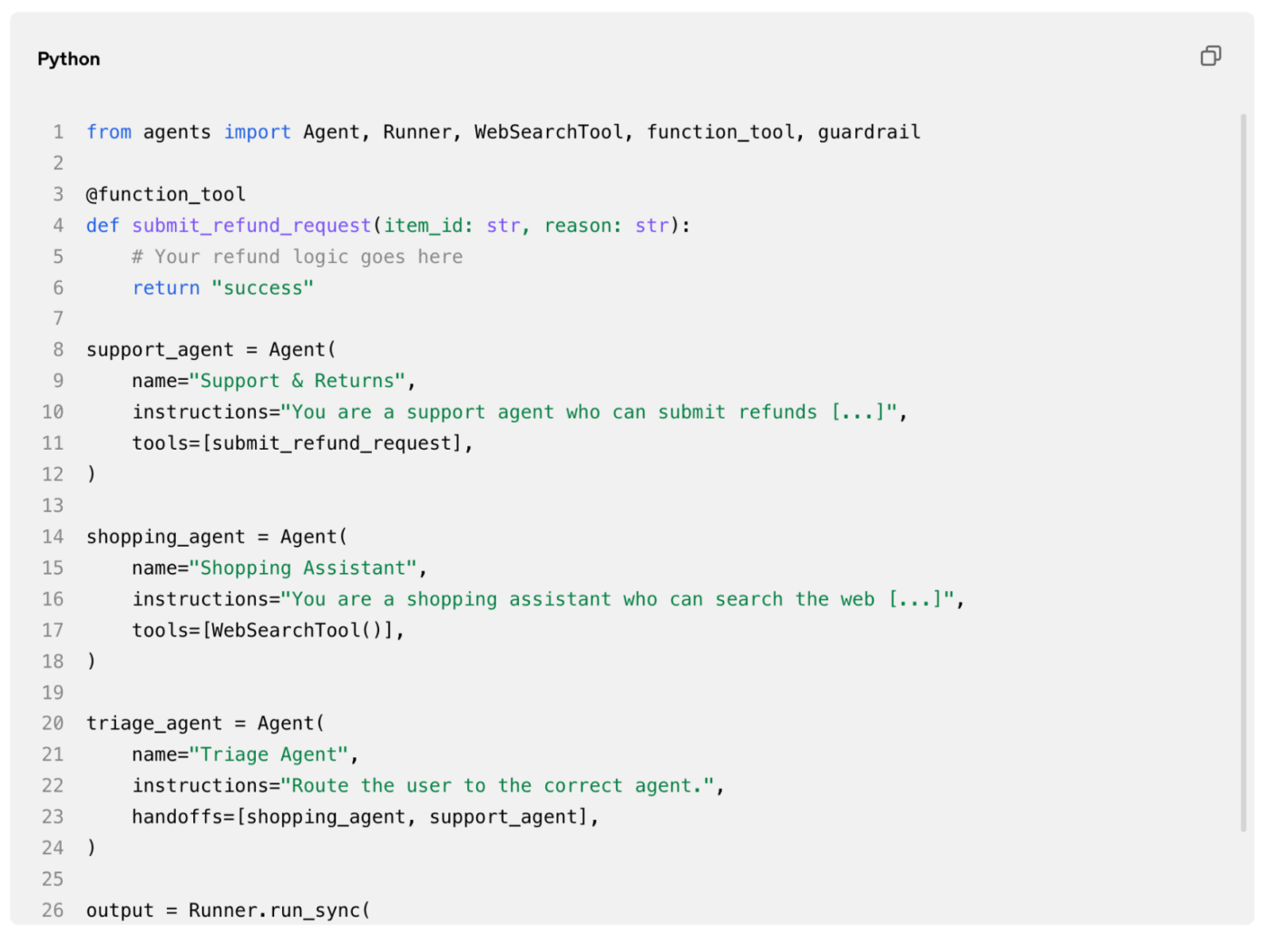
Here are the platform’s key strengths and trade-offs:
One Reddit user captured the mixed sentiment well: “I’ve developed complex applications in a week that would’ve taken me months before,” while another noted the agent “routinely fails basic tasks” and lacks the transparency needed for enterprise robotic process automation.
These contrasting experiences highlight a platform still maturing but already showing glimpses of transformative potential.
With that context in mind, let’s explore how OpenAI’s agents fit into existing enterprise technology ecosystems.
OpenAI’s agentic AI plugs into surrounding systems through a centralized Connector Registry that offers out-of-the-box integrations for common enterprise applications.
Administrators manage these connectors from a single console, granting or restricting access based on team roles and compliance requirements.
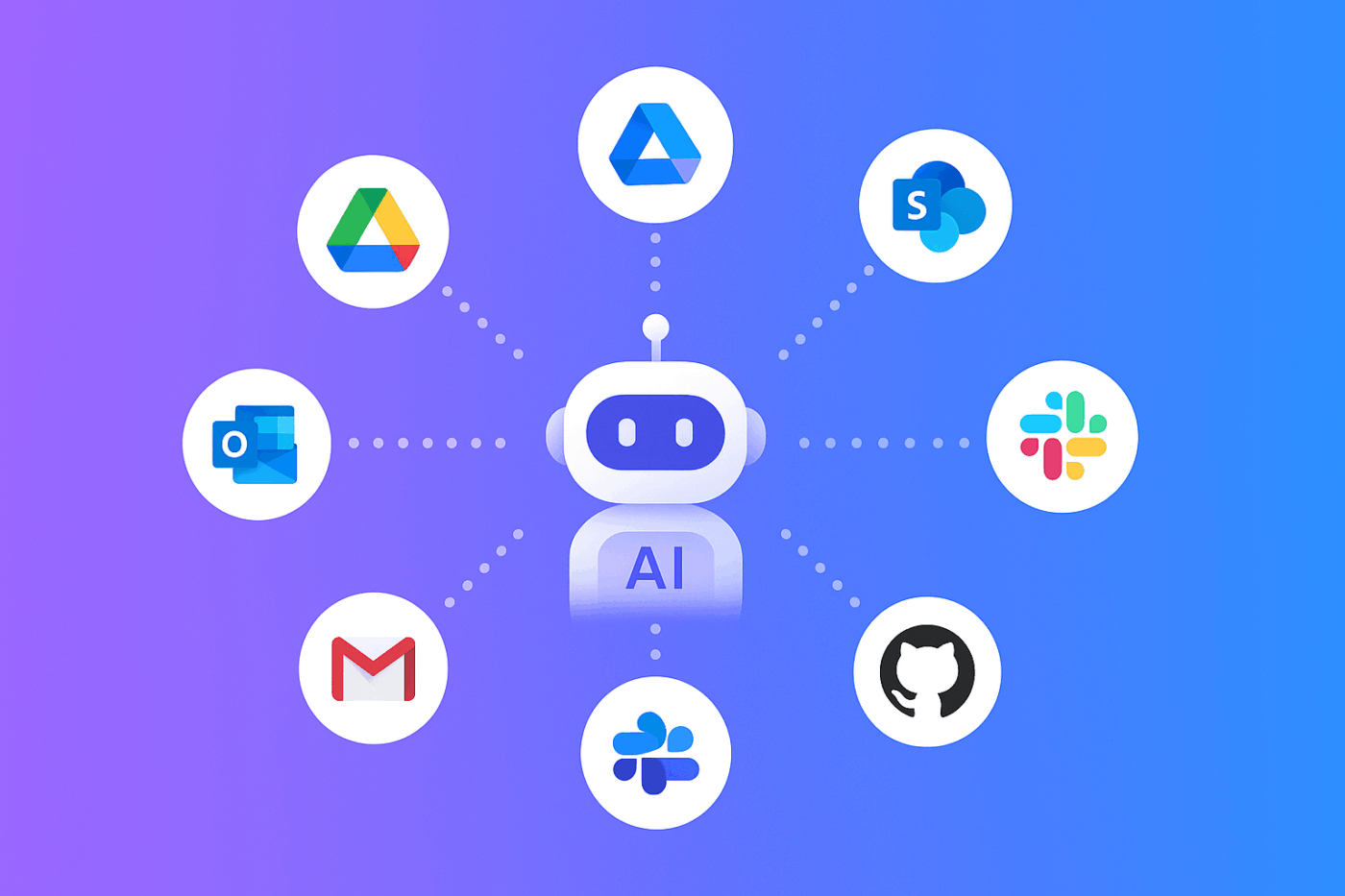
The Agents SDK and Responses API provide built-in tools like web search, file search, and computer control, allowing developers to create agents that retrieve live information and perform actions without custom integration code. This reduces implementation friction and accelerates time to value.
Here’s how major platforms fit into the OpenAI agent ecosystem:
| Platform | Integration Role |
|---|---|
| Dropbox, Google Drive, SharePoint | Secure document access and retrieval for research and reporting |
| Microsoft Teams, Slack | Real-time messaging, notifications, and workflow coordination |
| Gmail, Outlook | Email drafting, scheduling, and inbox management |
| GitHub | Code repository access, pull request automation, version control |
Third-party model integration is also supported. The platform isn’t limited to OpenAI models; developers can evaluate other models within the platform and call external APIs via standardized interfaces.
This extensibility makes OpenAI agents adaptable in heterogeneous tech stacks where multiple AI providers coexist.
Adopting agentic AI works best when organizations stage the rollout rather than flipping a switch enterprise-wide.
Start with a narrow pilot that targets a high-value, low-risk workflow, such as automating customer support ticket triage or generating weekly sales summaries. This allows teams to learn the platform’s strengths and limitations in a controlled environment.
Here’s a proven rollout sequence:
Stakeholders should include IT security to review data access policies, compliance officers to ensure regulatory alignment, and end users to gather practical feedback. Generic role labels keep the process flexible as organizational structures vary.
Change management matters here because agentic AI shifts decision-making from humans to algorithms in specific contexts.
Transparent communication about what the agent can and cannot do prevents unrealistic expectations and builds confidence in the technology.
Now, let’s hear what early users are actually saying about their hands-on experiences.
Early sentiment is sharply divided. Some developers are thrilled by the speed gains, while others find the current capabilities underwhelming for production use.
If you’re interested, you can read all 500+ comments about the feature here to see what I mean:
I Tested OpenAI’s $20/month “Agent” So You Don’t Have To. It Can’t Shop, Book, or Reserve Anything
byu/dahle44 inChatGPT
The launch of AgentKit also sparked discussion that third-party AI agent builders may struggle to compete unless they specialize or add unique value.
One observer noted that “most of those startups offering no-code AI workflows are suddenly looking redundant” now that OpenAI provides a native agent builder.
Despite current limitations, a portion of the community remains bullish. The sentiment is that agentic AI could revolutionize automation once reliability and compliance gaps close.
Handling mundane tasks like form-filling, shopping, or data monitoring represents what some call “the biggest technology paradigm shift in our lifetime.”
These polarized views set the stage for understanding where OpenAI plans to take the platform next.
OpenAI has outlined an aggressive timeline that moves from platform consolidation to autonomous research capabilities.
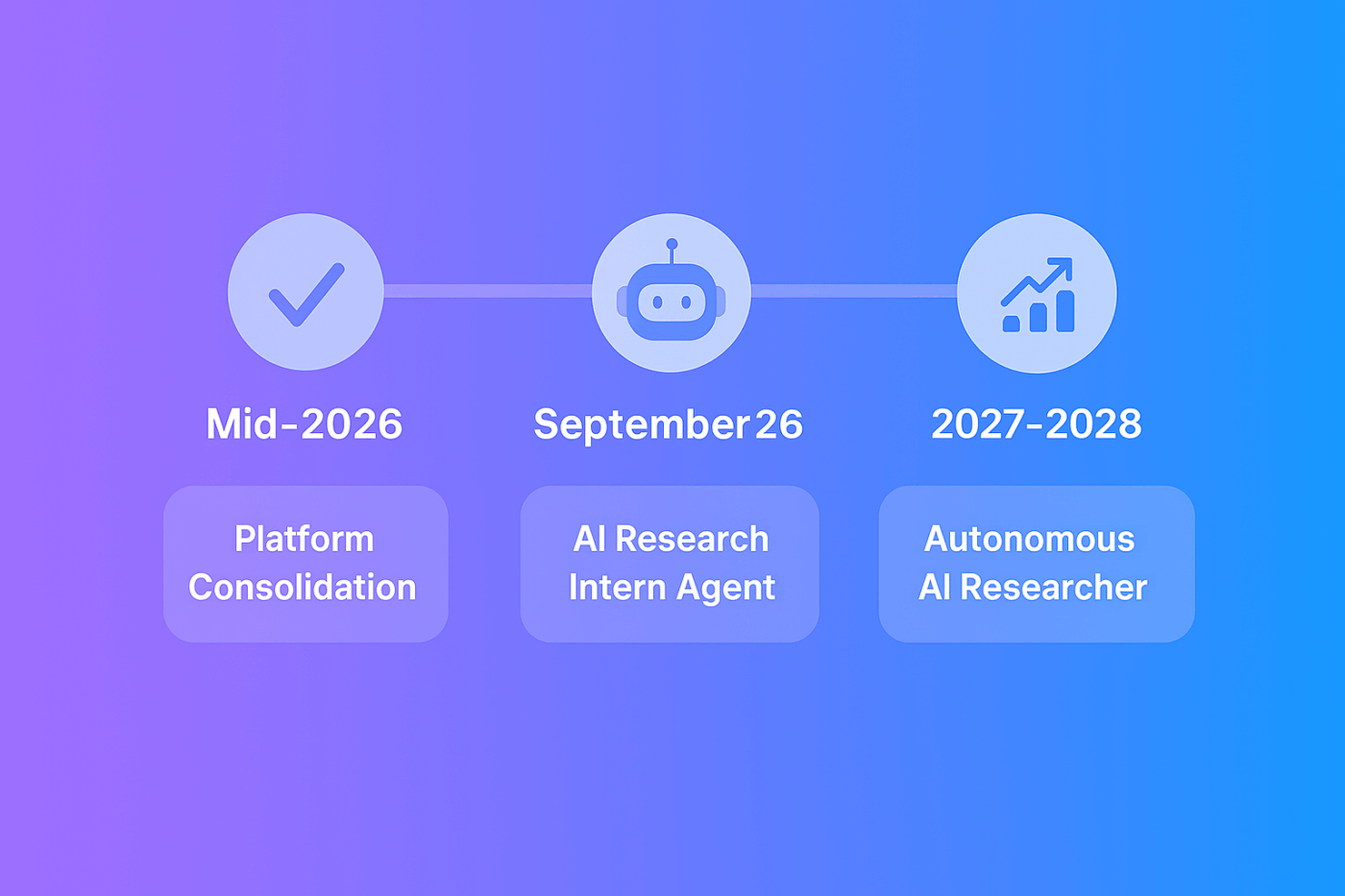
By mid-2026, OpenAI plans to retire the legacy Assistants API once the Responses API and Agent SDK achieve full feature parity.
This will unify developers on a single, improved agents platform. Expect formal deprecation announcements and migration tools as the transition date approaches.
In late 2026, OpenAI aims to deliver an AI agent capable of autonomously performing research at an “intern” level. CEO Sam Altman described this goal as creating a system that can read literature, generate hypotheses, run experiments, and analyze results with minimal human guidance.
Looking further ahead, OpenAI is targeting 2028 for a “legitimate AI researcher” that can tackle complex scientific problems end to end.
Achieving this milestone would require scaling compute infrastructure, extending context windows beyond the current five-hour effective reasoning limit, and advancing algorithmic innovations in reasoning.
Near-term enhancements include a Workflows API to programmatically deploy and manage agent workflows and bringing more agent capabilities into the ChatGPT consumer app. Regular model improvements will further boost agent reasoning and reduce errors.
With a forward-looking roadmap in place, leaders need to understand the financial commitment required to adopt this technology.
OpenAI uses a tiered subscription model for ChatGPT agent access and charges separately for API developer tools.
ChatGPT Plus costs $20 per month for one user and includes approximately 40 agent actions per month, with pay-as-you-go credits available for additional usage.
ChatGPT Pro, priced at $200 per month, offers priority access and essentially unlimited agent usage, initially providing around 400 agent actions per month by default.
For teams, ChatGPT Team is $25 per user per month on an annual contract or $30 per user monthly. This tier includes all Plus features for each user, a shared admin console, and higher combined usage limits.
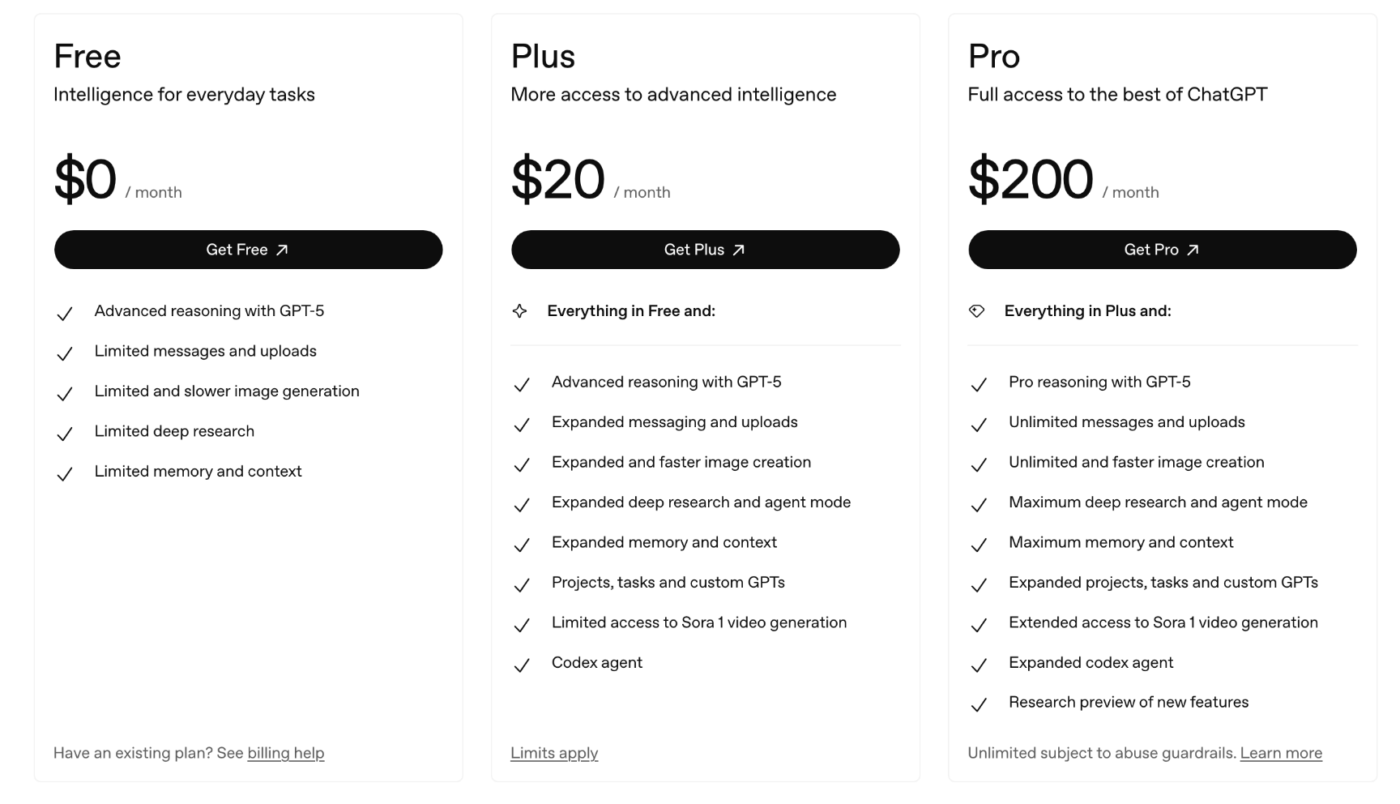
Developers using the API pay only for underlying model tokens and any add-on API calls. There is no separate fee to use the Agents SDK, AgentKit tools, or built-in functions.
However, web search queries incur an additional cost: $30 per 1,000 queries for GPT-4o search-preview and $25 per 1,000 for GPT-4o-mini. Other built-in tools like file search or code execution are billed solely via the model tokens consumed.
Hidden costs can emerge from compute-intensive tasks or large-scale integrations that require extensive API calls. Organizations should monitor usage closely during pilots to forecast monthly expenses accurately. If no public pricing exists for a specific feature, consult OpenAI’s business data page or contact their sales team directly.
OpenAI’s agent mode shows genuine promise but isn’t production-ready for every use case yet. I’ve seen it excel at research and synthesis while stumbling on workflows requiring nuanced judgment.
The smart move is treating this as an experimental tool rather than a full automation replacement. Start with one repeatable task that has clear success criteria, monitor it closely, and then adjust prompts and permissions until results are consistent.
Early adopters who iterate carefully will build valuable institutional knowledge as the platform matures. Those who wait for perfection will watch competitors capture the learning curve advantage.
© 2025 ClickUp